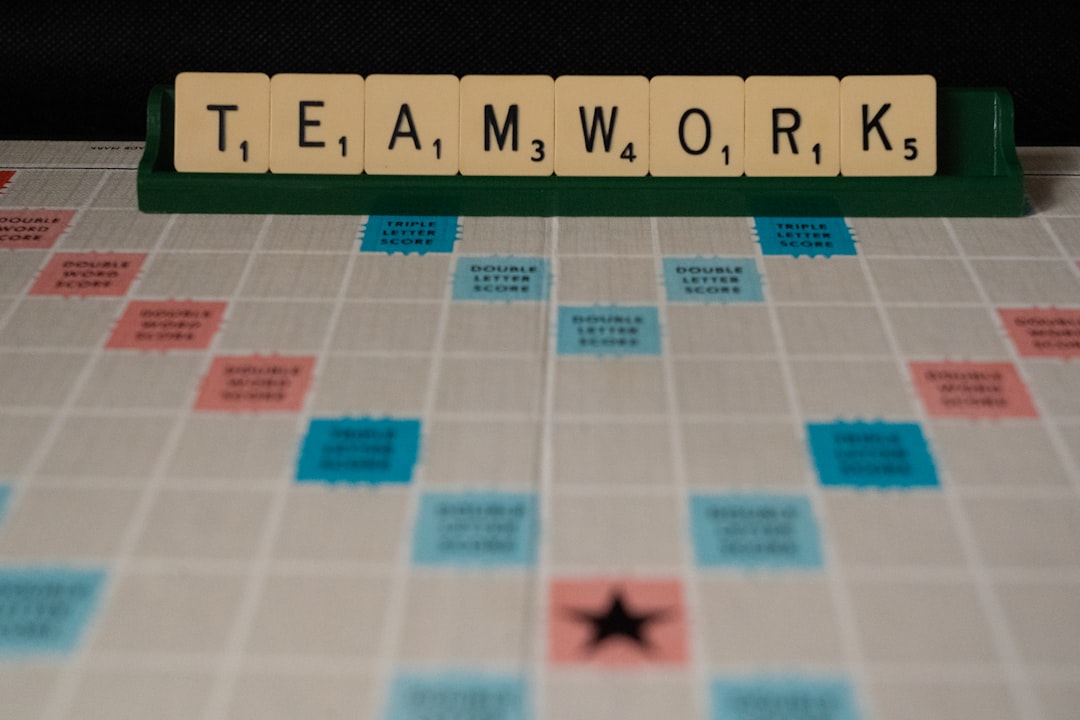How To Synchronize Global Teams Without Losing Momentum

Introduction
Global teams are no longer a novelty; they are a competitive advantage for companies that can tap talent wherever it lives. The promise is clear: diverse perspectives, round‑the‑clock productivity, and the ability to serve customers in every time zone. The reality, however, is often a maze of overlapping meetings, missed hand‑offs, and a sense that the team is constantly playing catch‑up. Synchronizing work across continents without losing momentum requires a deliberate blend of process, technology, and culture.
In this article we explore the core challenges of distributed collaboration, outline a step‑by‑step framework for establishing a shared rhythm, and recommend the essential tools that keep information flowing smoothly. By the end you will have a practical roadmap you can apply today to keep your global team moving forward with the same energy as a co‑located group.
Understanding the Core Challenges
Time‑zone disparity
When a designer in Berlin finishes their day, a developer in Bangalore may just be starting theirs. The result is a “follow‑the‑sun” pattern where work is handed off from one region to the next. While this can speed up delivery, it also creates gaps where critical context is lost.
Communication friction
Synchronous video calls feel natural when participants share a kitchen table, but they become exhausting when scheduled at odd hours for half the team. Asynchronous channels such as email and chat can become noisy, making it hard to locate the most recent decision.
Cultural and language nuances
Even when everyone speaks the same language, idioms, humor, and expectations differ. Misinterpretation can stall progress or lead to rework.
Visibility of work
In a co‑located office, a quick glance at a teammate’s screen reveals status. In a distributed setting, that visibility must be recreated through digital signals, otherwise work can appear invisible and momentum stalls.
Building a Shared Rhythm
Creating a predictable cadence is the foundation of momentum. The rhythm should respect local working hours while providing regular touch points for alignment.
Define a “core overlap”
Identify a window of time each day when most team members are online. This does not need to be a large block; even a one‑hour window can serve as a daily stand‑up, a place to resolve blockers, and a moment for quick decisions.
Establish a weekly sync cadence
Beyond the daily core, schedule a longer weekly meeting that brings together all regions. Keep it focused on strategic updates, milestone reviews, and forward planning. The purpose is to create a sense of collective ownership, not to recount every detail.
Set clear hand‑off conventions
When work moves from one time zone to another, use a structured hand‑off template. Include:
- What was completed
- What is in progress
- Immediate next steps
- Open questions or risks
Storing these hand‑offs in a shared repository ensures anyone can pick up the thread without hunting through chat logs.
Adopt a “working‑as‑ynchronous” mindset
Treat asynchronous communication as the default mode. Reserve live meetings for situations that truly require real‑time interaction, such as brainstorming or conflict resolution.
Essential Tools for Global Coordination
The right digital toolbox reduces friction and keeps information accessible. Below are categories of tools with specific recommendations that work well together.
Communication hubs
A central chat platform that supports threaded conversations, mentions, and searchable archives is vital. Slack, Microsoft Teams, or Mattermost each provide these capabilities. Create dedicated channels for:
- Project updates
- Quick questions
- Decision logs
Project and task management
A visual board that reflects the flow of work across time zones helps everyone see progress at a glance. Tools such as Jira, Asana, or ClickUp allow you to map stages, assign owners, and attach hand‑off notes. Use custom fields to indicate the “next region” responsible for the task.
Documentation and knowledge bases
A single source of truth prevents duplicated effort. Confluence, Notion, or a well‑structured Google Drive folder can serve this purpose. Organize content by product, feature, and team, and enforce a naming convention for easy discovery.
Real‑time collaboration
For design, prototyping, and code reviews, real‑time editors eliminate the need for endless file exchanges. Figma, Miro, and Visual Studio Live Share enable multiple people to work together while still respecting their local hours.
Time‑zone awareness
A simple but often overlooked tool is a shared world clock or a time‑zone overlay in your calendar. World Time Buddy or the built‑in Google Calendar “world clock” view helps schedule meetings that avoid unreasonable hours for any participant.
Communication Best Practices
Even with the best tools, habits determine success. The following practices keep communication clear, concise, and momentum‑friendly.
Use descriptive subject lines
In chat channels and email threads, start with a brief tag that signals the content type, e.g., “[Decision] Feature X priority” or “[Update] Sprint 12 metrics”. This makes scanning for relevant information quick.
Embrace the “one‑sentence summary”
When posting a status update, begin with a single sentence that captures the key point. Follow with details only if needed. Readers can absorb the essence instantly and decide whether to dig deeper.
Leverage @mentions wisely
Only tag people directly involved or whose input is required. Over‑mentioning leads to notification fatigue and reduces the impact of truly urgent alerts.
Record and share meeting outcomes
Even brief daily stand‑ups benefit from a written note that captures decisions and action items. Store these notes in the same repository as the hand‑off template, and link them to the relevant tasks.
Encourage “silent” collaboration
If a team member has a question that can be answered by looking at existing documentation, encourage them to search first. This habit reduces repetitive queries and reinforces the value of the knowledge base.
Managing Asynchronous Work
Prioritize clear task definitions
When assigning work, include acceptance criteria, expected deliverables, and any constraints. Ambiguity forces back‑and‑forth clarification, which slows momentum.
Set realistic expectations for response times
Agree on a standard turnaround window for different types of messages:
- Critical blockers – respond within 2 hours
- General questions – respond within 12 hours
- Non‑urgent updates – respond within 24 hours
Document these expectations in the team charter so everyone knows the norm.
Use “status badges”
Many task management tools allow custom fields or tags that indicate whether a task is “waiting on feedback”, “blocked”, or “ready for review”. These visual cues help teammates quickly identify where they can contribute without waiting for a direct request.
Implement “time‑boxed” async reviews
For code reviews or design critiques, allocate a fixed window (e.g., 48 hours) for reviewers to provide feedback. After the window closes, the author can proceed based on the received input, preventing indefinite waiting.
Maximizing Overlap Windows
Even a short overlap window can be leveraged for high‑impact activities if used strategically.
Conduct focused “sync‑up” meetings
Reserve the overlap for quick alignment sessions:
- Review of completed hand‑offs
- Identification of blockers
- Confirmation of next‑day priorities
Avoid long presentations; keep the agenda tight and time‑boxed.
Use collaborative whiteboards in real time
During the overlap, open a shared Miro board or Figma file. Participants can add comments, sketch ideas, or annotate directly, making the session productive without requiring everyone to be present for the entire meeting.
Record live sessions for later viewing
If a participant cannot join due to a time‑zone conflict, record the session and upload it to the knowledge base with a short summary. This ensures no one misses critical information and reduces the need for repeat meetings.
Maintaining Momentum Over Time
Momentum is the feeling that work is continuously moving forward. It can erode when teams feel disconnected or when processes become bureaucratic.
Celebrate small wins publicly
Acknowledge completed hand‑offs, resolved bugs, or delivered features in the main communication channel. Public recognition reinforces progress and motivates the team.
Conduct regular retrospectives
Every few sprints, hold a retrospective focused on cross‑regional collaboration. Ask:
- What helped us stay aligned?
- Where did we lose momentum?
- What can we experiment with next?
Action items from retrospectives should be assigned owners and tracked just like any other task.
Keep documentation lean and up to date
Outdated pages become a source of frustration. Assign a rotating “doc‑owner” who reviews and refreshes key articles each month.
Limit meeting overload
Audit recurring meetings quarterly. Cancel or consolidate any that no longer serve a clear purpose. Fewer meetings mean more time for focused work, which fuels momentum.
Cultivating Trust and Cultural Cohesion
When team members never meet in person, trust must be built deliberately.
Encourage informal virtual coffee chats
Create a rotating schedule where two people from different regions meet for a 15‑minute video call. These casual conversations help humanize colleagues and break down cultural barriers.
Share personal updates
A short “life update” section in the weekly sync allows teammates to learn about each other’s context—time‑zone constraints, holidays, or personal milestones.
Establish a shared purpose
Beyond project goals, articulate a higher‑level mission that resonates across cultures. When everyone sees how their work contributes to a broader impact, they feel more invested.
Provide language support
If English is the common language but not everyone is fluent, encourage clear, simple phrasing and avoid idioms. Offer a short “language‑clarity” checklist for written communication.
Measuring Success
To know whether synchronization efforts are working, define quantitative and qualitative metrics.
Cycle time per hand‑off
Track the elapsed time from when a task leaves one region to when the next region marks it as “in progress”. Shorter cycle times indicate smoother transitions.
Response time compliance
Measure the percentage of messages answered within the agreed‑upon windows. High compliance shows that the team respects async norms.
Meeting effectiveness score
After each recurring meeting, ask participants to rate its usefulness on a 1‑5 scale. Use the feedback to adjust agendas or frequency.
Team sentiment surveys
Quarterly anonymous surveys capture feelings of alignment, trust, and burnout. Look for trends that correlate with process changes.
Sample Implementation Roadmap
Below is a high‑level roadmap you can adapt to your organization. Each phase builds on the previous one, allowing you to iterate and refine.
Phase 1 – Baseline assessment
- Map current time‑zone distribution and identify existing overlap windows.
- Audit communication tools, channels, and meeting cadence.
- Conduct a quick team pulse survey to surface pain points.
Phase 2 – Rhythm establishment
- Define a core overlap hour that works for at least 70 % of the team.
- Schedule a daily 15‑minute stand‑up within that window.
- Set up a weekly 60‑minute all‑hands sync for strategic alignment.
Phase 3 – Tool consolidation
- Choose a single chat platform and migrate all project‑related discussions there.
- Implement a task board with custom fields for “next region”.
- Create a shared knowledge base with a clear folder hierarchy.
Phase 4 – Process codification
- Draft a hand‑off template and store it in the knowledge base.
- Publish response‑time expectations and embed them in the team charter.
- Introduce “time‑boxed” async review windows for code and design.
Phase 5 – Culture and trust building
- Launch a rotating virtual coffee program.
- Add a “life update” segment to the weekly sync.
- Conduct the first cross‑regional retrospective.
Phase 6 – Measurement and iteration
- Begin tracking cycle time, response compliance, and meeting scores.
- Review metrics monthly and adjust overlap windows or hand‑off processes as needed.
- Run a quarterly sentiment survey and act on the insights.
Checklist for Ongoing Synchronization
- [ ] Core overlap hour defined and communicated
- [ ] Daily stand‑up agenda posted in the same channel each day
- [ ] Weekly all‑hands agenda shared at least three days in advance
- [ ] Hand‑off template versioned in the knowledge base
- [ ] Task board fields include “current owner” and “next region”
- [ ] Response‑time expectations documented and visible to all
- [ ] Meeting recordings stored with a one‑sentence summary
- [ ] Celebration channel for wins and milestones active
- [ ] Rotating “doc‑owner” schedule published
- [ ] Virtual coffee pairings updated monthly
- [ ] Metrics dashboard displaying cycle time and response compliance
- [ ] Retrospective action items tracked as tasks
Conclusion
Synchronizing global teams without losing momentum is not a one‑size‑fits‑all formula. It requires a clear rhythm that respects local working hours, disciplined use of asynchronous communication, and a technology stack that makes information instantly accessible. Equally important are the cultural habits that build trust, celebrate progress, and keep the team aligned around a shared purpose.
By establishing a core overlap, standardizing hand‑offs, and measuring the health of your workflow, you create a self‑reinforcing system where work flows smoothly from one region to the next. The result is a truly global team that moves forward with the same energy and cohesion as a co‑located group, delivering value faster and with higher quality.
Take the roadmap and checklist provided, adapt them to your organization’s unique needs, and watch the momentum build, day after day, across every time zone.
Random Posts

Building a Productive Remote Culture Across Global Coworking Networks
Learn how to forge a thriving remote culture that works across global coworking spaces by combining human-centric leadership, smart tech, adaptable spaces and data-driven feedback for real productivity
2 months ago

Top Latin American Destinations for Location Independent Professionals
Discover why Latin America is a remote work haven: vibrant culture, low cost, reliable internet, digital nomad visas and coworking hubs. Explore top cities like Medellín, Mexico City, Buenos Aires and more
1 month ago

Essential Finance Taxes Legal Guidance and Insurance Options for Modern Nomads
A practical roadmap for digital nomads that untangles finance, tax, legal and insurance challenges, showing how to build a portable money system, stay compliant worldwide, protect yourself and keep more of your earnings while you roam
2 months ago

Smart Tax Strategies and Residency Choices for Digital Nomads
Discover how digital nomads can cut taxes and stay compliant by choosing the right residency, structuring income, and leveraging smart visa options in a clear step-by-step roadmap.
6 days ago

Wellbeing Strategies Every Digital Nomad Should Know
Boost your nomadic life with portable routines, balanced nutrition, daily movement, mental resilience and community tips, stay healthy, energized and thriving wherever you work.
1 week ago
Latest Posts

Essential Software Every Remote Professional Should Use
Master remote work with essential tools: instant messaging like Slack, high definition video calls such as Zoom, and asynchronous voice apps. Streamline communication, stay connected and boost productivity.
1 day ago

Mastering Remote Work Productivity for Digital Nomads and Freelancers
Learn proven habits, tools, and tactics that help digital nomads and freelancers stay focused, deliver quality work, and maintain a sustainable lifestyle while traveling the world.
1 day ago

Tech‑Friendly European Towns Perfect for Remote Living
Discover Europe’s best small towns where fast internet, affordable living and vibrant tech communities let you work remotely while soaking up historic charm, lakeside views or mountain air.
1 day ago